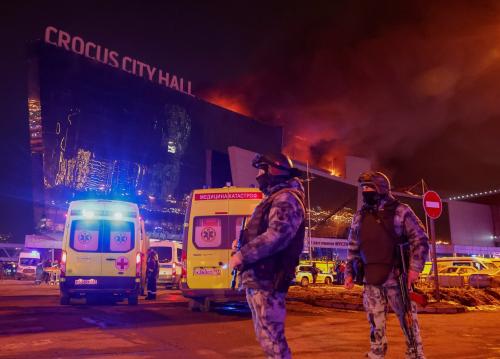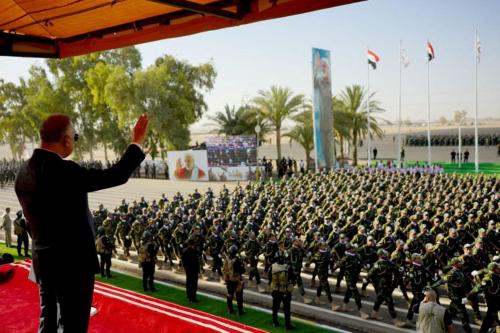On January 14, militants killed four civilians and wounded at least 20 in a terrorist attack in Jakarta, in the first successful operation that the self-proclaimed Islamic State (also known as ISIS) has launched in Southeast Asia. For several months, security officials from several Southeast Asian governments had been warning that ISIS supporters might mount an attack in the region. The signs were ominous: increased chatter on Malay and Indonesian language sites expressing support for ISIS, a steady stream of Southeast Asians departing for conflict zones in Syria and Iraq, and the arrest of ISIS sympathizers in Indonesia, Malaysia, and Singapore. Indonesian counterterrorism authorities had already received intelligence that militants were planning to mount attacks over the holiday period a couple of weeks earlier, which prompted the arrest of several militants and foiled a potential earlier attack.
When it comes to terrorism, it never takes more than one successful attack to trigger panic in society and overreaction by anxious governments. But when the January 14 attack finally did come, the Indonesian people met it with a spirit of defiance, rallying round the hashtag “We Are Not Afraid.” Meanwhile, during a visit to the scene soon after the attacks, Indonesian President Joko Widodo condemned the acts of violence as terrorism but was also quick to portray that everything “has returned to normal” in Jakarta. This was in marked and welcome contrast to the response of French President François Hollande after the Paris attacks, when he declared that “France was at war.”
The threat that ISIS poses in Indonesia is serious, but it should also not be exaggerated. The Jakarta attack was an amateur operation. The attackers were poorly trained. As many terrorists died in the assault as civilians.
Analysts are still debating whether the leadership of the core ISIS group in Iraq and Syria had directed the attack. But the evidence thus far points to the mastermind being Bahrun Naim, an Indonesian computer technician who had departed to Syria several years ago and is believed to have planned the attack to bolster his claim to be the leader of ISIS in Southeast Asia. In other words, it was an attack by Indonesians at the behest of Indonesians.
In fact, there is no evidence that Southeast Asia features prominently in the strategic calculus of the ISIS leadership in Raqqa. The Southeast Asian fighters from Katibah Nusantara, the Southeast Asian unit based in Syria that Bahrun Naim purportedly leads, appear to be useful devotees who have provided support for ISIS military operations in the Middle East, but they are hardly critical to ISIS’ overall objectives at this point.
In Southeast Asia, ISIS has found sympathizers but few supporters who are willing to organize a real ISIS affiliate. Although ISIS has made some headway in recruitment using the Internet, regional security officials and civil society organizations have worked effectively to preempt and challenge ISIS’ narrative. Moreover, a core element of this narrative—its appeal to socially and economically disenfranchised and marginalized Muslims—has considerably less traction in Southeast Asia than in Europe.
Within Indonesia, most of ISIS’ supporters and sympathizers are drawn from existing jihadist groups. Even in the southern Philippines, where militants are perpetually in search of an ideology to justify violence, most extremists have sworn allegiance to ISIS rather than tried to create an ISIS affiliate. Out of this incoherent ISIS-inspired jihadist community have come multiple claims to leadership by militants such as Bahrun Naim, Bahrumsyah, and Abu Jandal, all based in Syria, or Chep Hernawan, the self-proclaimed “president” of “ISIS Indonesia.”
Likewise, the number of Southeast Asians who have made their way to Iraq and Syria pales in comparison with the number of recruits from Europe and Australia. The Australian scholar Greg Fealy estimates that for every million people in Indonesia, 1.4 have set out to join ISIS. In Malaysia, the number is 8.5. But 14 per million Australians, 18 per million French, and 40 per million Belgians have joined ISIS.
Even the rough count of Southeast Asians joining ISIS numbers may overstate the threat to Southeast Asian nations. First, just as Indonesian and Malaysian fighters are being recruited to fight in Iraq and Syria, they are also dying on the battlefields there. Second, in many cases, those who have set off for Iraq and Syria may well have reservations about the ISIS brand of violence even as they accept it as a means to the end of creating an Islamic utopia. For instance, several Malaysian doctors suspected to be working in ISIS-held territory had gone there as aid workers.
Third, figures bandied about on ISIS’ recruitment from Southeast Asia often do not take into account the significant number of women and children who have made the journey together with fathers and husbands. Sidney Jones, an analyst of extremist and terrorist groups in Indonesia, suggests that women and children make up about 45 percent of Indonesians in ISIS-held territory. So far, there are no indications that women and children are bearing arms within the Katibah Nusantara.
The fact that Southeast Asia is not yet on the radar of the core ISIS leadership, however, or that the number of Southeast Asians fighting under the ISIS standard pales in comparison with the number of Europeans or Australians, should not be grounds for complacency. ISIS will always struggle to gain considerable popularity in Southeast Asia. The social, political, economic, and cultural conditions in Indonesia and Malaysia are such that the appeal of the ISIS brand of extremism will always remain limited. Even in Thailand and the Philippines, where Muslim minorities suffer more persecution, the conditions they face are nowhere near those confronted by alienated Muslims in Europe.
Even if extremists do eventually create an ISIS in Southeast Asia, its origins will lie not in Raqqa but in the fringes of Indonesian society, in the climate of extremism that reemerged amid the political activism that followed the fall of Suharto, Indonesia’s long-ruling dictator, in 1998. In that sense, the threat remains at heart a local phenomenon, even as it may find some form of transnational expression. So although ISIS’ ideology will always receive an airing, it will have to compete with radical and extremist groups of various ideological, political, and operational stripes.
Some analysts have warned that competition among presumptive leaders of ISIS in Indonesia will trigger more violence, and there is every likelihood of that happening. Others worry that ISIS may offer opportunities for existing groups to make common cause. This has not happened yet. The fallout between Jemaah Islamiyah and Indonesian ISIS supporters is well documented. But it would be foolhardy to dismiss the possibility of alliances for tactical, if not doctrinal, reasons. There are indications that the rivalry between ISIS and Jabhat al-Nusra in Syria, which Jemaah Islamiyah supports, has started to taper off. There is also evidence that the Indonesian jihadist ideologue, Aman Abdurrahman, has tried to unite disparate pro-ISIS groups. Counterterrorism establishments in the region should tune in closely to any chatter among Indonesian groups that points in this direction.
The world is transfixed on the possibility, however unlikely it may be, that a transnational, violent network might someday span Europe, the Middle East, and all the way to Southeast Asia. Such concerns are not new: recall the Comintern during the Cold War, and al Qaeda just a few years ago. But the real danger is not that the black banner of ISIS will be raised the world over but that the appearance of ISIS would trigger dynamics among existing jihadist groups and personal networks within Indonesia, possibly joined by groups from the Philippines and Malaysia, that may well escalate into further violence.



Commentary
Op-edISIS reaches Indonesia: The terrorist group’s prospects in Southeast Asia
February 8, 2016